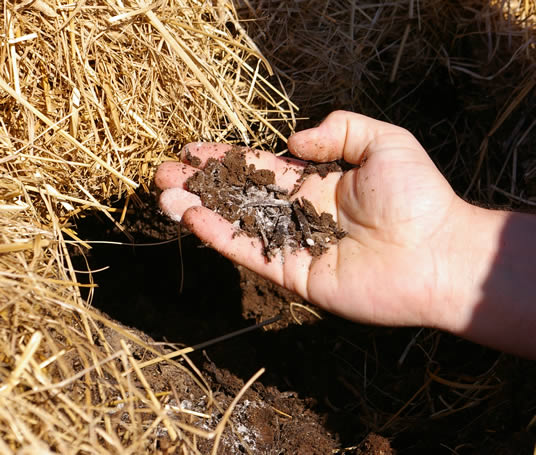
|
part
4: Are
you certifiable?
So far in this series, we’ve explored some the ideas and
practices underlying biodynamic viticulture. It’s already clear
that the task of nailing down a watertight definition of biodynamics
is a fraught one: while there are certain common practices,
biodynamics comes in many different flavours. As I explained at the
outset, farming biodynamically involves a changed philosophy or
worldview, on which agricultural practice is then built. It’s
largely caught, not taught. For the most part, winegrowers adopting
this method of farming learn it from someone else who’s further
down the road than them. Biodynamics-lite? But what about the details? To answer this, we need to take
a look at the various bodies who are responsible for certifying
biodynamics. Much like organics, there are certain rules that you
have to adhere to in order to be able to label your wine as being
‘biodynamic’. By far the largest certification body is Demeter,
an international organization formed in 1928, right at the dawn of
biodynamic agriculture. Demeter have member organizations who act as
certifying bodies in dozens of different countries, all of which
fall under the organizational umbrella of Demeter International (who
have a useful
website). Anne Mendenhall of Demeter USA explained to me what would
be needed to obtain biodynamic certification. ‘The full use of
biodynamic methods would be required for two years. That is, you’d
need to use the two field spray materials, BD 500 and BD 501, and
compost made with the other six BD preparations.’ [See a previous
part of this series for an explanation of the ‘preps’.] She
informed me that these preparations can be purchased ready to spray,
and because of the small quantities involved, are not expensive.
Would I have to keep animals on the farm?
‘Not absolutely, but it is highly recommended that some
livestock be integrated. Chickens running in the vines during the
growing season and sheep grazing during the winter have been
successful. They are there more to provide the astral component of
the farm.’ And while
most biodynamic practitioners would consider the correct timing of
interventions to be crucial to their success, this is not a
requirement of the Demeter certification. Mendenhall states that
‘no one has been decertified for improper timing in the USA’. Interestingly, despite the antipathy of biodynamics and
organics to any chemical treatments, vignerons applying these
techniques still have to rely on a chemical solution to the problem
of fungal disease. Thus I would need to use a copper-based
treatment, such as Bordeaux mixture, in conjunction with wettable or
powdered sulphur in order to ward off mildew and rot. I asked
biodynamic consultant Jacques Mell, who is based in Reims, why this
concession is allowed. ‘In vineyards there is no crop rotation.
Vines stay in the same soil year after year, so they are living on
their own excrement. They become feeble because there is no reviving
of the soil, and this weakens them. They are in a state of weakness
where they are liable to attack.’ What does this mean? While many biodynamic practitioners
would be horrified by the idea, Joly is quite right: it’s not a
huge step from standard organic practice to becoming a certified
biodynamic winegrower. Of course, the majority of biodynamic
practitioners would claim that fitting in with the rhythms of nature
and the wider cosmos are critical to the effectiveness of this form
of agriculture, but it is interesting that they are not necessary
for certification. I suspect many growers of a more scientific
persuasion could be tempted to take a pragmatic approach to
biodynamie, reasoning that there is a scientifically plausible
mechanism of action to its practice if it simply involved the use of
the various preparations, without adherence to a cosmic calendar. Controversies Chapoutier is involved in a rival organization to Demeter,
called Biodyvin (www.biodyvin.com),
who are also certifiying biodynamic winegrowers. While Demeter
certifies all kinds of biodynamic agriculture, Biodyvin concentrate
solely on viticulture. In the USA the existence of rival certifying
organizations has led to a fair degree of acrimony. This was
precipitated by the trademarking of the term ‘biodynamic’ by
Demeter USA, thus preventing anyone describing their produce as
biodynamic unless it was certified by Demeter. [Technically, this
sort of intellectual property is known as a ‘certification mark,
not a trademark. I was unable to get a clear answer from Demeter
International’s intellectual property lawyer as to whether they
have any intention of registering ‘biodynamic’ as a
certification mark in other countries.] Some people think that they
have a purer form of biodynamics and that Demeter is not strict
enough; others feel that some of the stipulations made by Demeter
certification are too strict. Other topics in this series
|

